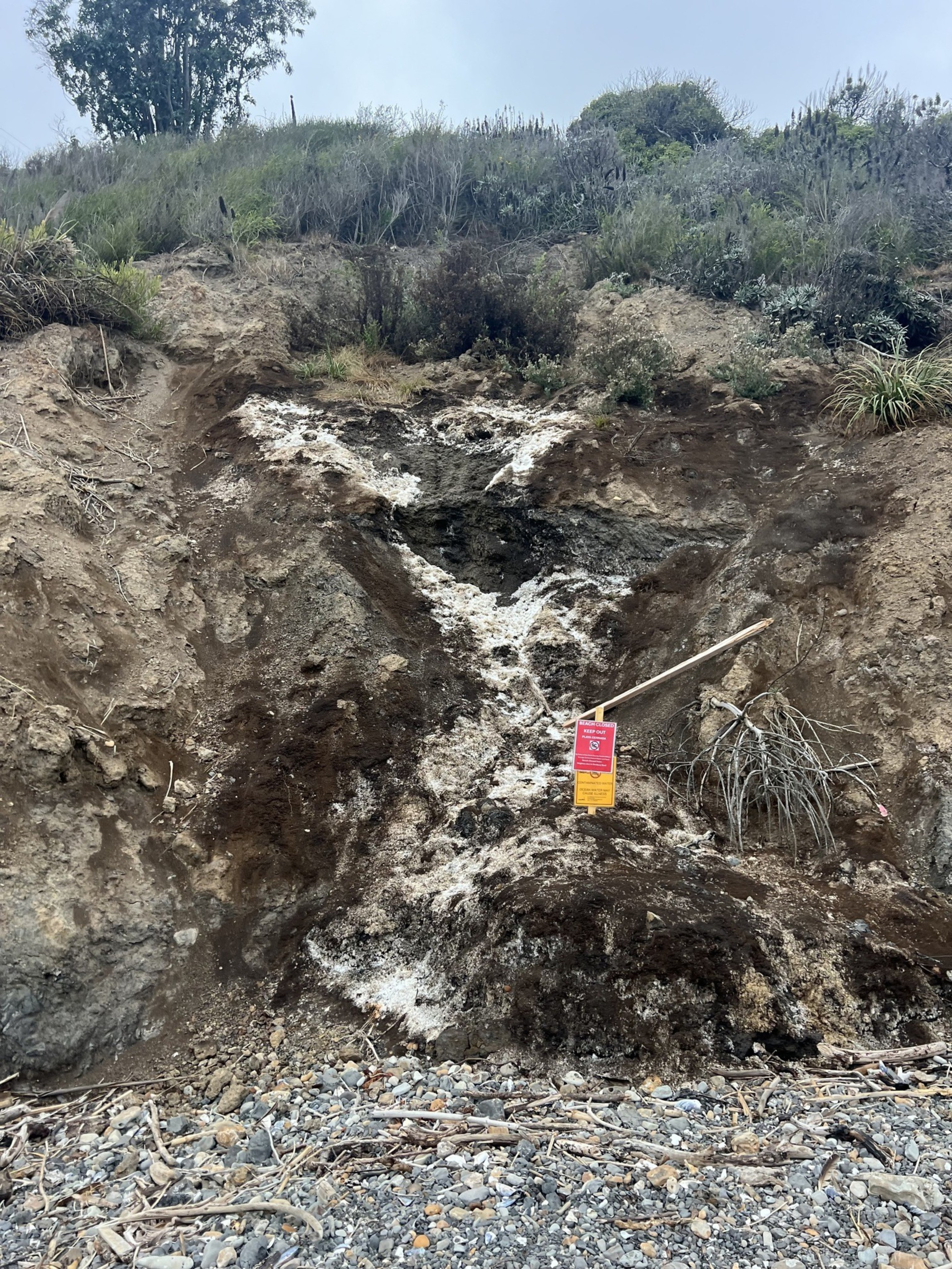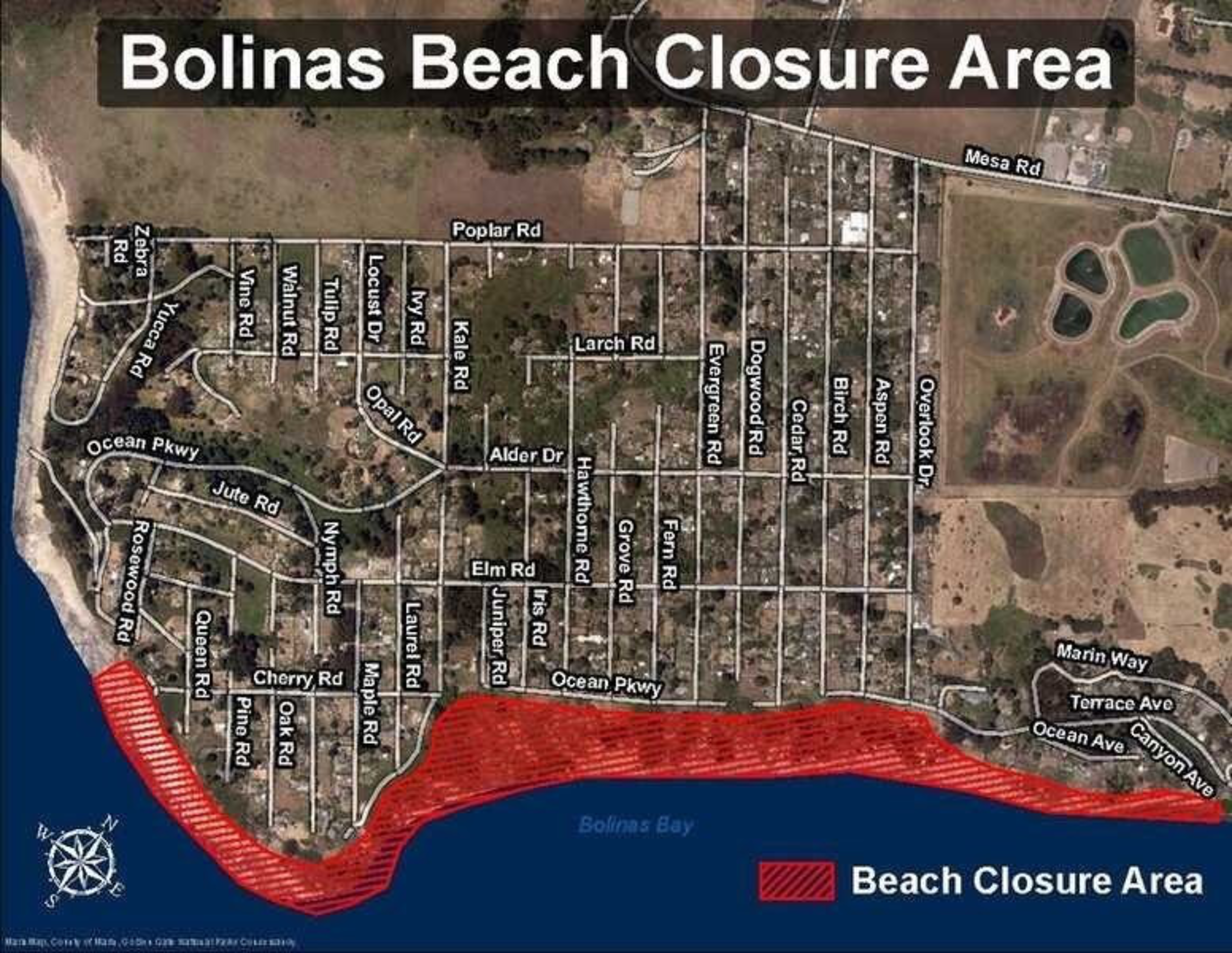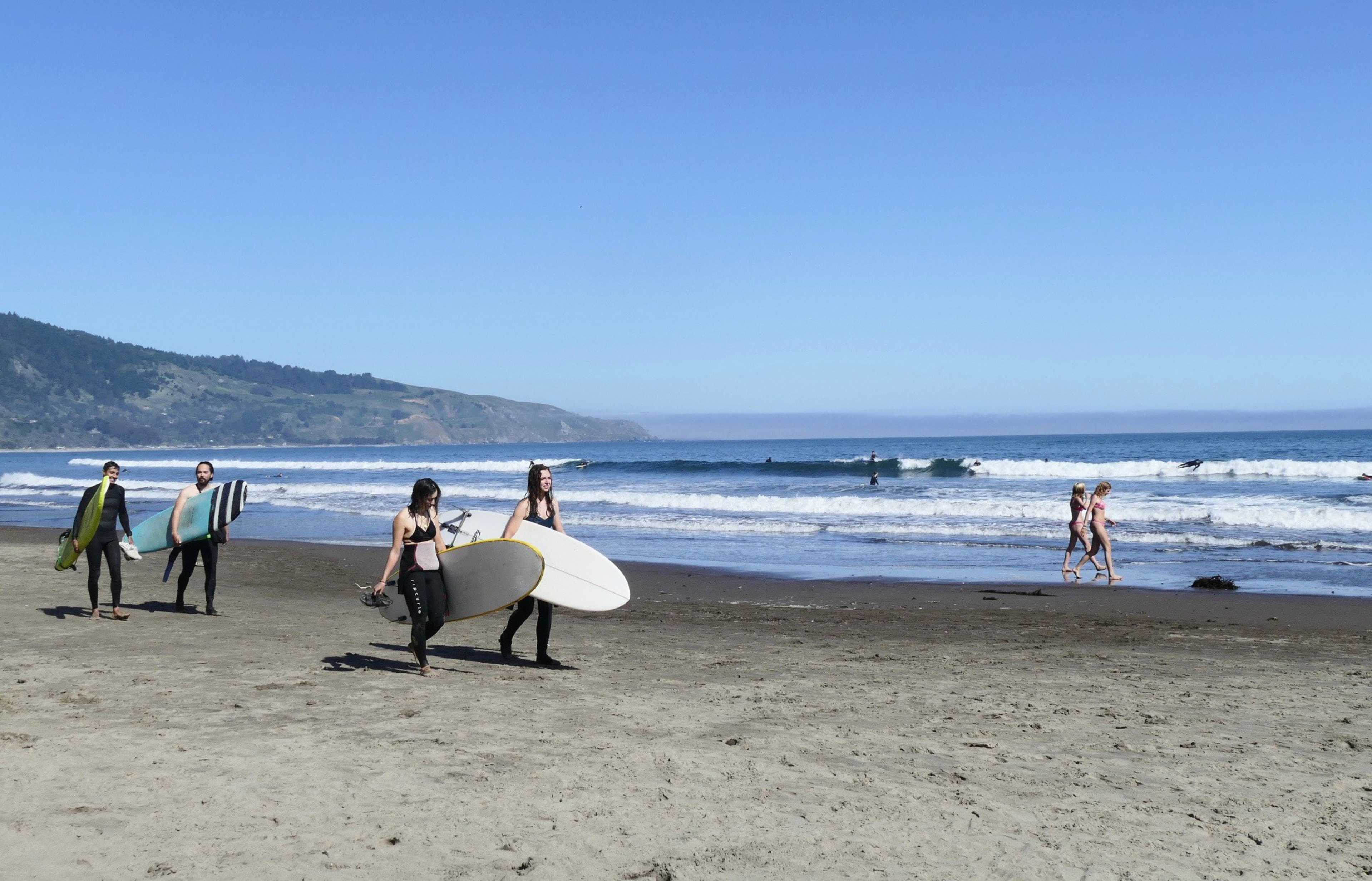Bolinas Beach is closed for the first time in memory as human waste oozes down from the cliffs above, crystalizing along the bluffs in stinking hues of yellow, white, and brown.
The beach was closed Sept. 6, the Point Reyes Light reported (opens in new tab).
Marin County officials were alerted to the issue when a permit inspection revealed sewage leaking along a bluffside property. A subsequent investigation and E. coli testing revealed “at least a few dozen” locations across a 1.5-mile stretch where sewage was flowing onto the beach at a rapid clip, according to Sarah Jones, director of the Marin County Community Development Agency, which handles environmental health services.

The neighborhood in Bolinas where the sewage was discovered, known as the “Big Mesa,” is served by septic tanks, but Jones said the sheer amount of sewage — which was still flowing Tuesday, 12 days after the initial discovery — could not have come from one tank alone.
Despite the soured cliffs, surfers remain undeterred.
“I really don’t know much about this except that the surf is nice and empty,” Mickey Murch, a second-generation farmer and Bolinas surfer, told The Standard on Tuesday. “I go in the water even during the biggest storms in the winter, when people’s septic systems are overflowing, so maybe I have a good immune system. I’m a nonbeliever.”
The county’s environmental health staff estimated that about 10 gallons of sewage are flowing into the ocean each minute. “Three of those together would result in about 43,000 gallons of wastewater delivered to the ocean daily,” Jones said to gasps at a town hall meeting last week. “This is a fair amount of wastewater happening here and in locations that people come into contact with.”

Septic tanks are much more vulnerable to flooding than sewer systems, especially in towns, like Bolinas, with a preponderance of aging, homemade tanks constructed out of redwood or other natural materials.
On the other side of Mount Tamalpais, in Woodacre, where a high water table collides with timeworn homemade septic tanks, a portion of the neighborhood experiences septic flooding and stinking backyards every year, with sewage flowing directly into a stream that’s home to endangered coho salmon.
Nick Paz, a former researcher at the Estuary & Ocean Science Center at San Francisco State University, is no stranger to working and surfing in stinky waters. The Walnut Creek resident routinely surfs off Pacifica’s Linda Mar Beach, which is listed as impaired under the Clean Water Act for bacteria contamination. Since headlines broke about the sewage leak in Bolinas, he has opted to surf in San Francisco.
“I was in the area when it happened, and I was considering surfing in Bolinas until I saw the news break and said, ‘Well, I guess I’m going to Ocean Beach,’” Paz said. “I’ve noticed parallels between this and Linda Mar — that it’s funky and different colors.”

With a population of just 1,200, Bolinas has become a Bay Area tourism hot spot thanks to its surf, cool temperatures, and counterculture legacy. The town’s limited water supply forced the local ad-hoc government to enforce a moratorium on taps, creating a permanently limited housing stock. Many say this has backfired as an influx of tech wealth has infiltrated the town. Zynga founder Mark Pincus, for example, owns a home on Bolinas Beach, mere feet from the sewage leak.
“I don’t want to poison the well with negative thoughts, but the amount of waste seeping into the ocean is catastrophic,” said Will Bartlett, a surfer and Bolinas resident. “The fact that we all have kind of known for a long time is difficult as a community member to comprehend, and it’s going to require a lot from the community to solve what is apparently a really shitty situation.”
Since the spill, water quality tests have come back negative for E. Coli, according to the county website (opens in new tab). Tests are conducted half a mile up the beach, by the Bolinas Lagoon’s tidal channel.
